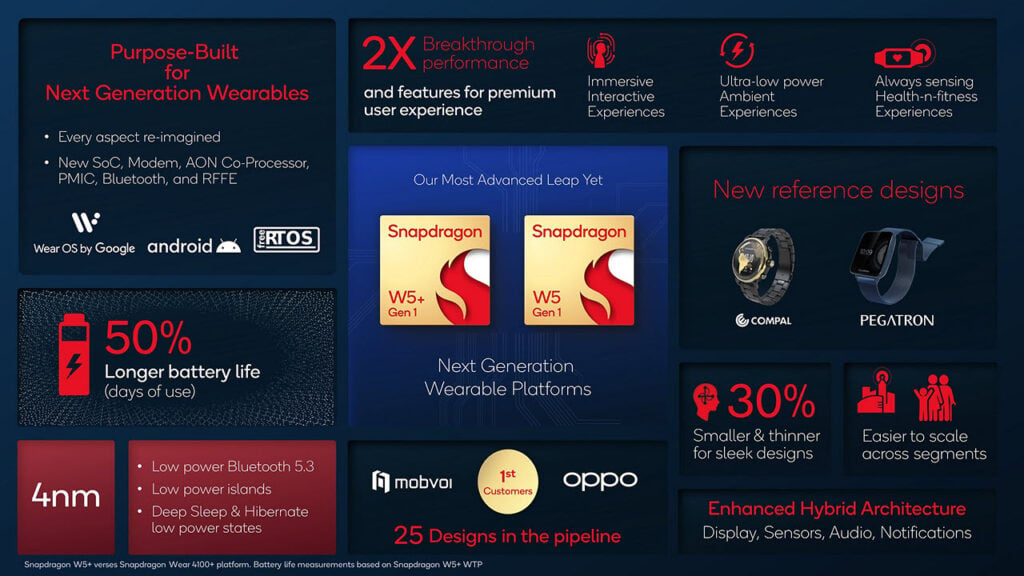Qualcomm has announced two new wearable chipsets, the Snapdragon W5+ Gen 1 and W5 Gen 1. The new chipsets are based on a 4nm process and are built for the next generation of wearables with Oppo and Mobvoi already having announced the first smartwatches based on the new platforms. Qualcomm says that 25 other designs are in the pipeline across segments as well.
Snapdragon has been repurposing its smartphone chips to work with wearables so far. However, the two new chipsets are being launched under the main Snapdragon name and are specifically built for wearable devices.
The new platform still uses the hybrid architecture from the previous Snapdragon Wear 3100 and 4100 chips but has made a significant leap in the manufacturing process, going from 12nm to 4nm for the main SoC and 28nm to 22nm on the coprocessor.

The flagship chip, W5+ Gen 1 claims twice the performance and features and is 30% smaller in size compared to the company’s previous flagship offering. The new chip also incorporates Bluetooth 5.3 as well as low-power WiFi, GNSS and audio in addition to low-power states like Deep Sleep and Hibernate.
The W5+ Gen 1 also features an always-on coprocessor that will now handle features previously taken care of by the main chip including audio and keyword detection for voice assistants as well as notifications (via Bluetooth 5.3). The coprocessor can also handle onboard machine learning and support health tracking features.

This means that the main processor only handles heavy-duty tasks like calling, 3D and animated watch faces, GPS navigation and other tracking features. This has helped Qualcomm achieve the aforementioned boost in battery life and performance.
The W5 Gen 1 is supposed to be a simpler chip powering simple devices like fitness trackers, enterprise devices and smartwatches for kids. As for the devices powered by these new platforms,
The next generation TicWatch from Mobvoi will be powered by the W5+ Gen 1 and will launch this fall. The Oppo Watch 3 will make use of the simpler W5 Gen 1 and will launch sometime in August.
Qualcomm is making some bold claims here. However, with the significant jump in the manufacturing process, a shorter wait time to market and Google and Samsung tackling the software side of things in collaboration, Android smartwatches might just turn things around for good this time.
In the News; Minecraft bans in-game NFTs as Mojang shuns ‘scarcity and exclusivity’






